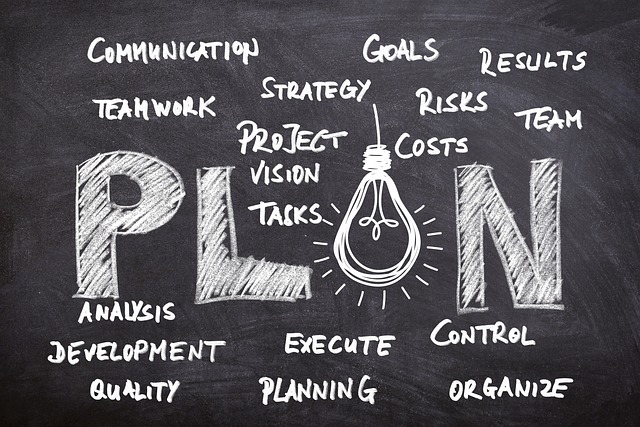Understanding High-Performing Teams
High-performing teams are the cornerstone of successful organizations. They are characterized by their ability to deliver exceptional results and foster a strong collaborative spirit among team members. When a team is performing at its peak, they not only meet their goals but often exceed them. This dynamic environment encourages innovation, creativity, and, most importantly, a strong sense of accountability among members. However, developing such teams does not happen by chance. It requires deliberate effort, strategic planning, and, above all, insightful leadership. Here’s where the role of the manager becomes crucial.
A manager’s role extends far beyond mere oversight or administration. Indeed, they are tasked with creating an atmosphere where each member feels valued and motivated. They must balance various team dynamics, individuals’ skills, and the overarching goals of the organization. The journey to establishing high-performing teams starts with understanding what makes a team ‘high-performing’ in the first place. These teams possess a shared purpose, set clear priorities, and are agile enough to navigate challenges. They communicate openly, resolve conflicts constructively, and leverage each member’s strengths to enhance productivity. Each of these facets plays a vital role, and a manager should be keenly aware of how to cultivate all these attributes.
The Importance of Clear Goals
Setting clear goals is foundational for any team aiming for high performance. When teams know precisely what they are working towards, they can align their efforts accordingly. A manager must ensure that these goals are specific, measurable, achievable, relevant, and time-bound (SMART). When goals are articulated clearly, each team member understands their responsibilities and how their individual contributions matter. This clarity fosters accountability and helps individuals recognize how their work fits into the bigger picture.
However, it’s not just about setting the goals; it’s also about communicating them effectively. Regular check-ins can provide team members with a sense of direction while also offering an opportunity to make mid-course adjustments if necessary. Additionally, incorporating team input when setting these goals can create a sense of ownership among members. The more involved they feel in the goal-setting process, the more committed they will be to achieving those goals. This participative approach not only bolsters motivation but also enhances team cohesion, making individuals more likely to support one another in pursuit of shared objectives.
Building Trust within the Team
Trust serves as the bedrock of high-performing teams. Without trust, team dynamics falter, leading to ineffective communication, reduced collaboration, and a decline in overall performance. A manager plays a pivotal role in fostering this trust through transparency, integrity, and consistency. They must model trustworthy behavior by being reliable, following through on promises, and admitting mistakes when they happen. Such actions encourage team members to reciprocate with openness and honesty.
Moreover, creating opportunities for team bonding enhances trust significantly. Team-building exercises, both formal and informal, allow members to interact in a non-work context, which often fosters deeper relationships. Through these activities, team members can develop a better understanding of one another’s strengths, weaknesses, and working styles. This understanding is crucial for collaboration and can lead to a more cohesive team. Further, a culture that encourages constructive feedback strengthens trust, as team members feel safe to share their thoughts and ideas, knowing that these contributions will be respected and valued.
Effective Communication Strategies
Communication is another critical element in developing high-performing teams. Managers who cultivate open lines of communication create a climate where ideas and concerns can be shared freely. This openness not only enhances collaboration but also facilitates quicker problem-solving. Good communication means more than just exchanging information; it involves being attentive to how messages are delivered and received. Effective managers utilize various communication tools, tailored to fit the context and the team’s needs.
Regular team meetings can serve as forums for discussing challenges and celebrating successes. These gatherings are essential because they allow team members to contribute to discussions openly. Managers should encourage participation by fostering an inclusive atmosphere where every voice matters. Additionally, embracing technology such as team collaboration platforms can enhance communication, especially in remote or hybrid working environments. These tools help in keeping everyone informed and engaged, regardless of their physical location.
Encouraging Collaboration and Innovation
A high-performing team thrives on collaboration and innovation. A manager’s role is vital in creating an environment where these elements flourish. Encouraging collaboration means breaking down silos and promoting interdependence among team members. Managers should encourage brainstorming sessions where all contributions are welcome. This openness leads to a treasure trove of innovative ideas that can drive the team forward. Furthermore, rewarding collaborative behavior reinforces the importance of working together towards common goals.
Innovation often springs from a sense of psychological safety, where team members feel they can take risks without the fear of failure repercussions. Managers play a critical role in establishing this safe space. They must celebrate creative efforts and understand that not all risks will bear fruit. By framing failures as learning opportunities, managers can inspire their teams to step outside their comfort zones, boosting both creativity and team morale.
Recognizing and Rewarding Performance
Recognition serves as a powerful motivator and is essential for high-performing teams. Managers who actively acknowledge individual and team accomplishments foster a positive environment that encourages further excellence. Recognition can take many forms, from simple verbal praise to more formal acknowledgments like awards or bonuses. The key is to be timely and specific in recognition. When team members see their contributions appreciated, it reinforces desirable behaviors and encourages similar performances in the future.
Moreover, recognition should not solely focus on high-profile achievements. Acknowledging small wins can also build momentum toward larger goals. Managers should create a culture where effort and progress are celebrated, not just the end results. This mindset helps in developing resilience within the team since it shows that every contribution counts, regardless of scale. By implementing a structured recognition program, a manager can systematically appreciate efforts, thus bolstering morale and fostering a sense of belonging within the team.
Continuous Development and Learning
The journey of creating a high-performing team is continuous. Managers should prioritize the development and learning opportunities for their team members. Encouraging professional growth not only keeps team members engaged but also equips them with new skills that enhance collective performance. This can be in the form of workshops, online courses, or mentorship programs. By investing in their team’s development, managers demonstrate that they value their members’ progress and are committed to their career trajectories.
Additionally, setting aside time for informal learning can greatly benefit team dynamics. Regularly scheduled “lunch and learn” sessions or skill share workshops where team members can teach each other are practical and enhance team bonding. Such initiatives empower members to share their expertise, thus fostering a culture of continuous improvement. Importantly, development should not be a rigid, top-down approach but rather flexible to accommodate various preferences and learning styles. This inclusivity can further enrich the team’s knowledge base and drive overall performance upward.
Feedback Loops: The Key to Improvement
Regular feedback is essential for nurturing high-performing teams. Feedback loops allow team members to understand their strengths and areas for growth, paving the way for continuous improvement. Managers should cultivate a culture where feedback is an ongoing, constructive conversation rather than a once-a-year event. This ongoing dialogue builds trust and creates an environment conducive to learning and development.
Moreover, feedback should not be a one-way street. Encouraging feedback from team members about managerial performance can also be invaluable. This reciprocal approach enhances accountability and fosters respect among all team members. To facilitate effective feedback sessions, managers should focus on being specific, actionable, and positive. Encouraging self-reflection and peer reviews can bring additional insights, allowing everyone to contribute to the team’s progress. The ultimate goal is to establish an adaptable team that continuously learns and evolves through thoughtful feedback.
Conclusion
Developing high-performing teams is an intricate process that involves clear goal-setting, building trust, fostering open communication, and encouraging collaboration. A manager’s role is central to this journey. By actively engaging with their team members and prioritizing development, they cultivate an environment ripe for success. Each step taken toward nurturing a high-performing team not only benefits individual members but significantly enhances the organization as a whole, resulting in a more dynamic, effective, and resilient workforce.
FAQ
What defines a high-performing team?
A high-performing team is defined by its ability to consistently achieve superior results through effective collaboration, clear goals, trust among team members, and strong communication. These teams not only fulfill their objectives but often exceed them and innovate in the process.
What is the manager’s role in team development?
The manager plays a crucial role in team development by setting clear goals, fostering trust, encouraging open communication, promoting collaboration, recognizing performance, and facilitating continuous learning opportunities. They act as a guide, motivating and empowering team members to thrive.
How can trust be built within a team?
Trust can be built within a team through transparent communication, consistent and reliable behavior from leaders, team-building activities, and promoting a culture of honesty and respect. It’s essential for team members to feel safe and valued for their contributions.
Why is continuous learning important for high-performing teams?
Continuous learning is vital because it keeps team members engaged and equipped with new skills, fostering innovation and adaptability. It encourages a growth mindset and helps teams stay competitive and effective in their performance.
How should feedback be given to team members?
Feedback should be given in a specific, constructive, and timely manner. It should encourage improvement and growth, focusing on actionable insights. Managers should also seek feedback from team members to foster a culture of openness and mutual respect.



